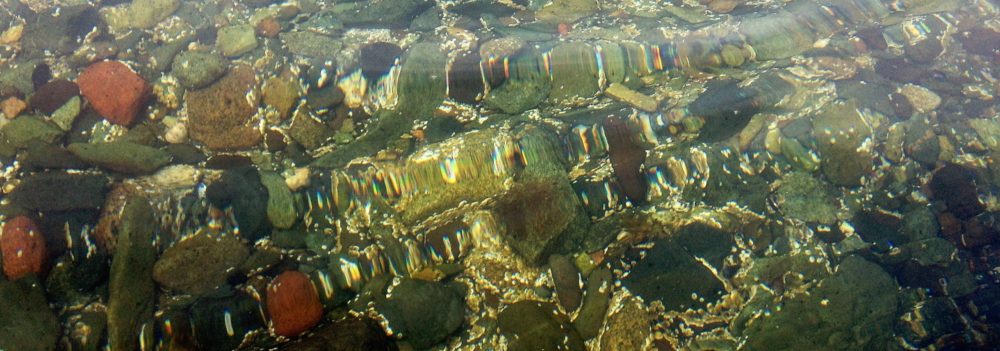Muscle histology
[q]
SMOOTH MUSCLE – describe[a]This type of muscle is INVOLUNTARY and NON-STRIATED.
[q]
SMOOTH MUSCLE – location[a]This type of muscle is found in the digestive tract and blood vessels.
[q]
CARDIAC MUSCLE – describe[a]This type of muscle is STRIATED AND INVOLUNTARY.
[q]
SKELETAL MUSCLE – describe[a]This type of muscle is STRIATED AND VOLUNTARY.
[q]
SARCOLEMMA – define[a]This is the name of muscle fiber membrane.
[q]
ENDOMYSIUM – define[a]This is the name of the sheet of loose connective tissue surrounding a muscle cell.
[q]
FASCICLES – define[a]This is a group of muscle fibers surrounded by connective tissue called the PERIMYSIUM.
[q]
EPIMYSIUM – define[a]This is the name of the outer wrapping of the muscle.
[q]
MYOFIBRILS – define[a]This is the name of the fine fibers found within the sarcolemma.
[q]
MYOFILAMENTS are made of what?[a]Myosin and actin.
[q]
SARCOMERES – define[a]These are repeating subunits that make up the myofibril.
[q]
Z-lines – define[a]This is the structure that marks the ends of a sarcomere.
[q]
Tropomyosin – define[a]This is the name of the protein that covers the binding sites when the muscle is relaxed.
[q]
T-TUBULES – define[a]This is the name of the tubules that penetrate the sarcomere from the surface of the cell.
[q]
The SARCOPLASMIC RETICULUM stores what?[a]This structure stores Ca++ inside the muscle cell.
[q]
MOTOR UNIT – define[a]This is a motor neuron and the muscle cells it innervates.
[q]
How many muscle cells do smaller motor units have?[a]Small motor units have as few as 3-5 muscle cells per neuron.
[q]
How many muscle cells do larger motor units have?[a]Large motor units have as many as 1000 muscle cells per neuron.
[q]
MYONEURAL or NEUROMUSCULAR JUNCTION – define[a]synapse between the motor neuron and the muscle cell meet.
[q]
THE ALL-OR-NONE PRINCIPLE – define[a]This principle states: there is no such thing as a partial contraction of a muscle fiber.
[q]
Spasm – define[a]This is a sustained muscle contraction due to excessive neuromuscular activity. They can be short-term or long-term.
[q]
HYPOTONIA – define[a]Decreased muscle tone
[q]
ATONIA – define[a]Loss of muscle tone characteristic of paralysis)
[q]
HYPERTONIA – define[a]Increased muscle tone
[q]
Slow twitch muscle fibers – define[a]These are muscle fibers with lots of mitochondria, capillaries (aerobic) and resistance to fatigue.
[q]
Fast twitch muscle fibers – define[a]This are muscle fibers that are strong, rapid, and fatigue easily.
[[/qdeck]
Muscle histology reversed
[q]
What muscle fibers are strong, rapid, and fatigue easily?[a]Fast twitch muscle fibers
[q]
What are muscle fibers with lots of mitochondria, capillaries (aerobic) and resistance to fatigue?[a]Slow twitch muscle fibers
[q]
Increased muscle tone is called?[a]HYPERTONIA
[q]
Loss of muscle tone is called? (Characteristic of paralysis)[a]ATONIA
[q]
Decreased muscle tone is called?[a]HYPOTONIA
[q]
What is a sustained muscle contraction due to excessive neuromuscular activity? They can be short-term or long-term.[a]Spasm
[q]
What principle states: “There is no such thing as a partial contraction of a muscle fiber?”[a]THE ALL-OR-NONE PRINCIPLE
[q]
ACETYLCHOLINE is an example of what?[a]NEUROTRANSMITTER
[q]
Where do the motor neuron and the muscle cell meet?[a]MYONEURAL or NEUROMUSCULAR JUNCTION
[q]
Which motor units have as many as 1000 muscle cells per neuron?[a] larger motor units, i.e. in the quads
[q]
Which motor units have as few as 2-5 muscle cells per neuron?[a]smaller motor units, i.e. in the hands and face for fine motor control
[q]
What is the structure that includes the neuron and the muscle cells it innervates?[a]MOTOR UNIT
[q]
What structure stores Ca++ inside the muscle cell?[a]The SARCOPLASMIC RETICULUM
[q]
What is the name of the tubules that penetrate the sarcomere from the surface of the cell?[a]T-TUBULES
[q]
What is the name of the protein that covers the binding sites when the muscle is relaxed?[a]Tropomyosin/Troponin Complex
[q]
What is the structure that marks the ends of a sarcomere?[a]Z-lines
[q]
What is the name of the repeating subunits that compose the myofibril?[a]SARCOMERES
[q]
Myosin and actin compose what structure?[a]MYOFILAMENTS
[q]
What is the name of the fine fibers found within the sarcolemma?[a]MYOFIBRILS
[q]
What is the name of the outer wrapping of the muscle?[a]EPIMYSIUM
[q]
What is the name of groups of fibers surrounded by PERIMYSIUM?[a]FASCICLES
[q]
What is the name of the sheet of loose connective tissue surrounding a muscle cell?[a]ENDOMYSIUM
[q]
What is the name of muscle fiber membrane?[a]SARCOLEMMA
[q]
What type of muscle is STRIATED AND VOLUNTARY?[a]SKELETAL MUSCLE
[q]
What type of muscle is MYOGENIC?[a] CARDIAC MUSCLE
[q]
What type of muscle is STRIATED AND INVOLUNTARY?[a]CARDIAC MUSCLE
[q]
What type of muscle is found in the digestive tract and blood vessels?[a]SMOOTH MUSCLE
[q]
What type of muscle is INVOLUNTARY and NON-STRIATED?[a]SMOOTH MUSCLE
[/qdeck]
